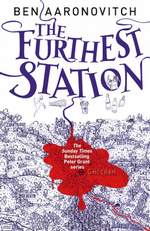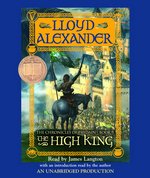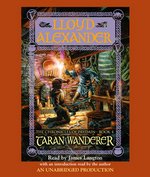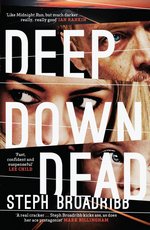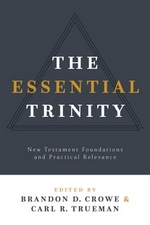by Graeme Simsion
eARC, 352 pg.
St. Martin’s Press, 2017
Read: April 17 – 18, 2017

If my life prior to February 15, 2012, had been a song, it might have been “Hey Jude,” a simple piano tune, taking my sad and sorry adolescence and making it better. In the middle, it would pick up—better and better— for a few moments foreshadowing something extraordinary. And then: just na-na-na-na, over and over, pleasant enough, but mainly because it evoked what had gone before.
That’s the first paragraph, and I’m betting 80% of reviewers will be quoting that — how can you not? You get a sense of Adam, his musical taste, how much music means to him/the way he thinks — and you get the novel’s mood. In the next few pages, you get an idea what Adam’s life is like in February 2012 — his relationship, his relationship with his mother, the nostalgia (and maybe more) he feels towards a country he lived in while he was young and his first great (greatest?) love.
Then we end the introduction with this paragraph that pushes us into the novel:
No matter now. I would soon have more immediate matters to occupy my mind. Later that day, as I continued my engagement with the past, scouring the Internet for music trivia in the hope of a moment of appreciation at the pub quiz, a cosmic DJ—perhaps the ghost of my father—would lift the needle on the na-na-na-nas of “Hey Jude,”say, “Nothing new happening here,”and turn it to the flip side.
“Revolution.”
On the flip side is an email from The One Who Got Away (“got” isn’t necessarily the best term — “slipped away”, “blindly walked away from”, “made the greatest mistake of your life with” — come closer). Angelina was a night-time soap actress that Adam had an affair with while he lived in Australia while working on a contract job in 1989. Over the next couple of chapters Adam reminisces about his time with Angelina — it’s a heckuva love story. It’s an even better doomed-love story since we all know it’s coming to an end, and he’s able to tell it that way.
This email is the first communication she’s attempted since she informed Adam that she was getting married before he had a chance to come back.
We also get a compressed history of Adam and Claire (his might-as-well-be wife), their 15+ year relationship — the ups, downs, and obvious commitment. Even if the romance is largely gone, there’s something strong under-girding their bond. Right? Maybe? Probably? And I do mean compressed — their decade and change is given less space than the few months Angelina and Adam have. We also see what’s going on in the Spring of 2012 with their relationship, and how this new email correspondence fits in with Adam’s life.
Part II of the book is focused on what happens when Adam and Angelina reconnect in person for a few days months later. Which is really all I can say about that. Well, it takes almost the same amount of space as the first part (ecopy, so I can’t do page counts, so these are just estimates) — so it’s obviously a lot more detailed.
I loved Part I — totally. The feel of it, seeing the changes for the better that Adam goes through thanks to the confidence boost that emailing Angelina gives him. Watching his relationship with Claire improve at the same time. All the while enjoying the 1989 story, too, sharing that feeling of nostalgia and more with him. It’s just so well done.
But Part II? I had serious problems with. I cannot detail them without ruining the book for you all. But people just don’t act the way most (if not all) of our primary characters do here. There are just too many psychological, emotional, spiritual and moral problems with what happens, how people react (both in the heat of the moment and in the cool light of day) — people, real people, just can’t do this and survive in any meaningful fashion.
We also do meet Angelina’s husband, Charlie, and I have so many conflicting opinions about him — on the one hand he appears to be good guy, generous, gracious (and other positive adjectives that don’t start with “g”) . . . but he’s dishonest with everyone (possibly including himself), manipulative, cold, calculating . . . I want to state that he’s not physically or mentally abusive, because my description of him almost sounds like it. Things would be less murky if he was.
Angelina is equally troubling — both in how she acts toward Charlie, her children and Adam. I’m not incredibly certain that I’m pleased with the way she treats herself (or if she’s true to her chosen vocation or character). I can understand a lot of how Adam comports himself, but at some point, I needed him to call the whole thing off (anyone else could’ve, but it wasn’t in their character at the moment).
The whole thing at the point became the car wreck you pass by on the Interstate and try to not gawk at.
I can’t find the exact quotation, but Nora Ephron said something about Sleepless in Seattle not being a love story, but a story about movie love (Rosie O’Donnell’s character says something similar in the film). About the only way I can handle huge portions of this book is thinking of it in similar terms — Part II isn’t about actual love, romance/commitment between two human beings — but it’s about love in fiction, romance/commitment between two fictional characters. If I think of Adam and Angelina (and Charlie and Claire) as actual people, I feel a mix of pity and repugnance for all involved (well, no repugnance for one of them, but I’ll leave it at that) — along with a strong desire to get a pastor and/or psychologist to their doorsteps. But if I think of them as fictional characters — which, I guess is what they are, as much as one doesn’t like to admit that — I can feel that revulsion and sympathy and just hope that they’re able to have decent lives.
But the writing? Simsion’s craft here is what kept me going through my distaste — and what’s going to compel me to give it a higher rating than I initially thought I would. Everything I thought/hoped he was capable of after The Rosie Project is on full display here — and, honestly, Adam Sharp is probably a better novel than it’s predecessors. Yes, there are comic moments, but this isn’t as funny as the Rosie books, so don’t look for a similar experience. But the emotional palate is richer, more varied — deeper.
The use of music throughout — as Adam’s refuge and outlet, the way that he bonds with people, and the songs used for various purposes — is just dynamite. Well, almost dynamite — Cher’s “Walking in Memphis” rather than Marc Cohn’s? Really? (both in the playlist and novel) One of the problems with musicians in novels who write their own material (Alex Bledsoe’s Tufa, Andy Abramowitz’s Tremble, Hornby’s Tucker Crowe, etc.) who use other’s songs, is that you have to imagine the music, imagine the skill, imagine the feeling. But with Adam (or Doyle’s The Commitments) you can take a shortcut through that and know exactly what feelings, sounds, rhythms, and so on are to be conjured up (Simsion gives us the exact album version sometimes so we can’t get it wrong). I’m sure there are articles to be written about the music here and how it serves, propels, shapes the plot — but I don’t have that kind of time.
Oh, I can’t forget to mention — the official playlist for this is killer. I wish I’d have had an Internet connection available while I was reading it, I’m sure it’d have been a bonus. It’s definitely helping while I write — but there’s some good stuff there for just good listening.
I was genuinely excited to read this book — while I wasn’t especially taken with The Rosie Effect, I loved The Rosie Project — I’m pretty sure it made my Top 10 that year, and I recommended it to everyone I could think of online and in person. So when a new book by Simsion was announced — and not another Rosie book — I preordered it, and jumped on the opportunity when I saw it on NetGalley. And then that Introduction hooked me hard. Part I was wonderful. But man . . . I just couldn’t handle Part II. Which leaves me in a pickle when it comes to this post, you know?
I admired this book more than I enjoyed it — though I need to stress I really enjoyed parts of it. I’d love to heartily recommend this, I wish I could — but I can only do so with reservations. There’s so much I object to going on in these pages that I can’t, while I can respect Simsion’s work — and I know this book achieved everything he wanted. I’ll give it 4 Stars on merit, not my own enjoyment.
Disclaimer: I received this eARC from St. Martin’s Press via NetGalley in exchange for this post — thanks to both for this.
N.B.: As this was an ARC, any quotations above may be changed in the published work — I will endeavor to verify them as soon as possible.
—–

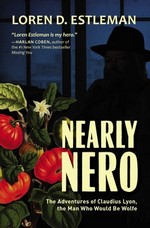 Nearly Nero: The Adventures of Claudius Lyon, the Man Who Would Be Wolfe
Nearly Nero: The Adventures of Claudius Lyon, the Man Who Would Be Wolfe





